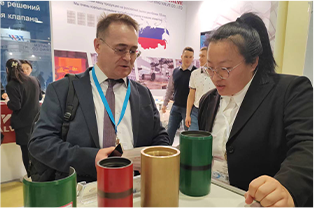- Afrikaans
- Albanian
- Amharic
- Arabic
- Armenian
- Azerbaijani
- Basque
- Belarusian
- Bengali
- Bosnian
- Bulgarian
- Catalan
- Cebuano
- Corsican
- Croatian
- Czech
- Danish
- Dutch
- English
- Esperanto
- Estonian
- Finnish
- French
- Frisian
- Galician
- Georgian
- German
- Greek
- Gujarati
- Haitian Creole
- hausa
- hawaiian
- Hebrew
- Hindi
- Miao
- Hungarian
- Icelandic
- igbo
- Indonesian
- irish
- Italian
- Japanese
- Javanese
- Kannada
- kazakh
- Khmer
- Rwandese
- Korean
- Kurdish
- Kyrgyz
- Lao
- Latin
- Latvian
- Lithuanian
- Luxembourgish
- Macedonian
- Malgashi
- Malay
- Malayalam
- Maltese
- Maori
- Marathi
- Mongolian
- Myanmar
- Nepali
- Norwegian
- Norwegian
- Occitan
- Pashto
- Persian
- Polish
- Portuguese
- Punjabi
- Romanian
- Russian
- Samoan
- Scottish Gaelic
- Serbian
- Sesotho
- Shona
- Sindhi
- Sinhala
- Slovak
- Slovenian
- Somali
- Spanish
- Sundanese
- Swahili
- Swedish
- Tagalog
- Tajik
- Tamil
- Tatar
- Telugu
- Thai
- Turkish
- Turkmen
- Ukrainian
- Urdu
- Uighur
- Uzbek
- Vietnamese
- Welsh
- Bantu
- Yiddish
- Yoruba
- Zulu
Pup Joint Tubing Applications and Benefits in Oil and Gas Industry
Understanding Pup Joint Tubing A Vital Component in Oil and Gas Operations
In the oil and gas industry, various components come together to ensure the efficient extraction and transportation of hydrocarbons from deep beneath the earth's surface. Among these vital components is the pup joint tubing, an often-overlooked yet crucial element in the well completion and production processes. This article aims to provide an in-depth understanding of pup joint tubing, its functions, applications, and significance in oilfield operations.
What is Pup Joint Tubing?
Pup joint tubing refers to short sections of pipe used to adjust the length of the tubing string in oil and gas wells. These joints typically range from 2 to 10 feet in length and are designed to create a precise fit when the overall length of the tubing string does not match the wellbore requirements. Pup joints are usually made from the same material as the primary tubing, which is often carbon steel or alloy steel, to ensure compatibility and strength.
The term pup joint derives from the idea that it is a pup-sized fitting within the larger context of a well's tubular system. They can be manufactured to various specifications, including different diameters and wall thicknesses, allowing operators to customize their designs based on the specific needs of their operations.
Functions of Pup Joint Tubing
The primary function of pup joint tubing is to provide flexibility in the well design. A wellbore may require specific lengths of tubing to accommodate various operational demands, such as changes in pressure or depth. Pup joints help achieve the required lengths without the need for an entirely new tubing string, thereby saving time and costs.
- Adjusting Tubing Lengths In instances where standard lengths of tubing are either too long or short, pup joints can quickly fill the gap, providing a solution that enhances operational efficiency.
- Facilitate Injection and Production Pup joints are often used in injection wells, where they can help fine-tune the injection of water or gas into the reservoir to enhance oil recovery.
- Ease of Installation The relatively short length of pup joints makes them easier to handle and install compared to longer tubing sections. This ease of use reduces the risk of errors during assembly and can speed up the overall drilling and completion process.
pup joint tubing

Applications of Pup Joint Tubing
Pup joints are used in various applications throughout the life cycle of a well. They are commonly seen in drilling, completion, and production phases. Specific applications include
- Well Completion During the completion phase, pup joints can be integral in connecting several sections of casing and tubing, ensuring the integrity of the wellbore is maintained.
- Workover Operations In workover operations where existing wells are stimulated or enhanced, pup joints are frequently employed to modify the existing tubing string configurations.
- Subsea Applications In subsea operations, where space is limited and conditions are challenging, the use of pup joints can provide the necessary adjustments and flexibility that are crucial for efficient operations.
The Importance of Quality and Standards
Quality and manufacturing standards for pup joints are crucial in ensuring safety and durability. It is vital for operators to source pup joints from reputable manufacturers that adhere to industry specifications, such as API standards. High-quality pup joints can withstand the harsh conditions often present in oil and gas operations, including high pressures and corrosive environments. Inferior quality products may lead to failures, potentially causing safety hazards and financial losses.
Conclusion
In conclusion, pup joint tubing is an essential element in the toolbox of oil and gas operators. By allowing for flexibility in tubing configuration, these short sections of piping ensure that wells are efficient, safe, and effective in extracting valuable resources. As the industry evolves and seeks greater efficiencies, the role of components like pup joint tubing will continue to be significant. Emphasizing quality and adherence to standards can help operators maximize the benefits derived from this critical element of well construction and maintenance.
-
Tubing Pup Joints: Essential Components for Oil and Gas OperationsNewsJul.10,2025
-
Pup Joints: Essential Components for Reliable Drilling OperationsNewsJul.10,2025
-
Pipe Couplings: Connecting Your World EfficientlyNewsJul.10,2025
-
Mastering Oilfield Operations with Quality Tubing and CasingNewsJul.10,2025
-
High-Quality Casing Couplings for Every NeedNewsJul.10,2025
-
Boost Your Drilling Efficiency with Premium Crossover Tools & Seating NipplesNewsJul.10,2025







